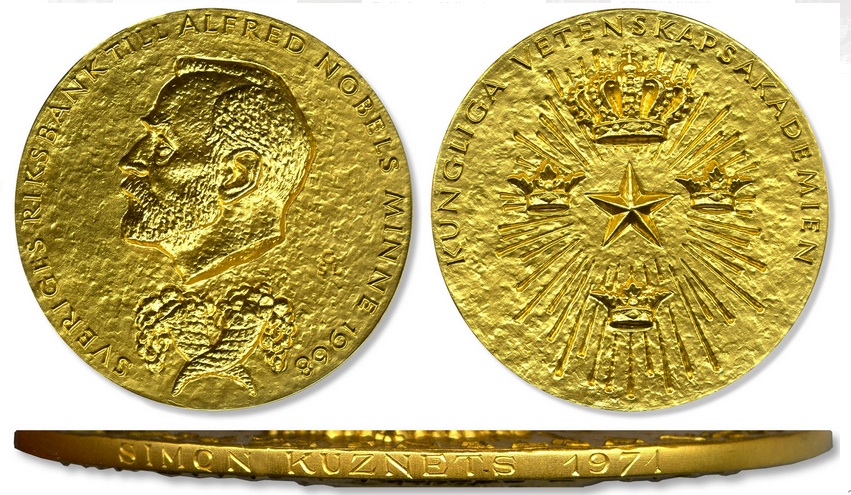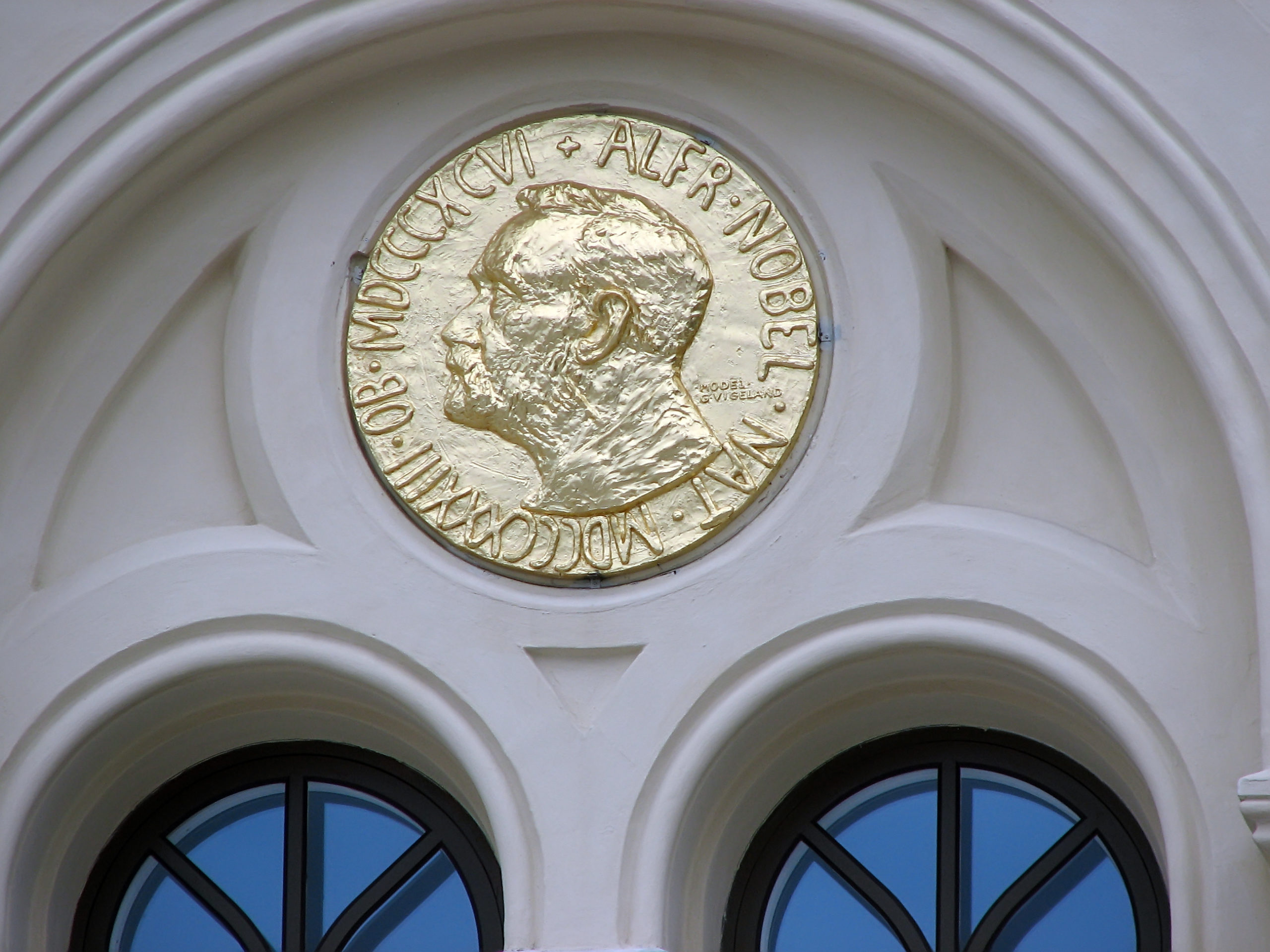Last night, Simon Kuznets’s 1971 Nobel Prize medal was sold at auction for $321,540.
I wonder what the price tells us.
Nobel Medals
The Nobel Economics prize is slightly different from the other Nobel awards because it was first given in 1969 through an endowed gift from the Sveriges Riksbank. Made of 23-carat gold that is worth $8700 or so, this is the medal:

The history of Nobel medallion sales is sparse. Examples include a $4.76 million sale at a Christie’s 2014 auction of James Watson’s Nobel medal for his DNA research and William Randal Cremer’s Nobel medal for the 1903 Peace Prize sold in 1985 at Sotheby’s for $16,750.
What Kuznets Figured Out
Simon Kuznets gave us the GDP.
Concerned that the country could not precisely answer “How are we doing?”, he created the statistical approach for calculating annual U.S. production and economic growth. The decade was the 1930s and his task was deciding which goods and services would count. Concluding that the GDP, then called national income accounting, had to measure the wealth of the country, he said to add together the prices of all goods and services that were legally produced during one year. Work done at home that had no price would not count. Neither would sales of illegal goods and services like prostitution and marijuana.
Handy during World War II, national income accounting illustrated our productive capacity. Once we knew what we we had, we could determine the land, labor and capital available for war production. The steel we had been using for cars told us how many airplanes we could make. Cotton shirt production provided the information we needed for making uniforms. People have said that Kuznets’s national income models were as important as the guns that won the war.
Our Bottom Line: Price System
We take prices for granted.
As consumers, prices tell us about quality and affordability. Two dollar gas conveys an incentive that encourages us to buy it. Without market generated prices, whether calculating the GDP or buying groceries, we would miss the messages they send to us.
For a Nobel Prize medal, the price says something about the recipient. What is the message when a James Watson medal gets so much more than the Simon Kuznets medallion?






